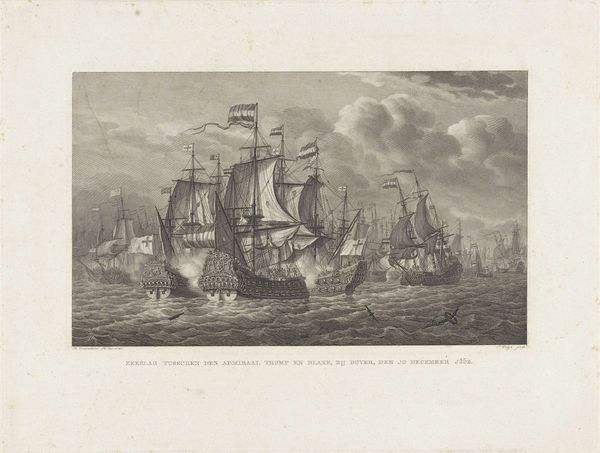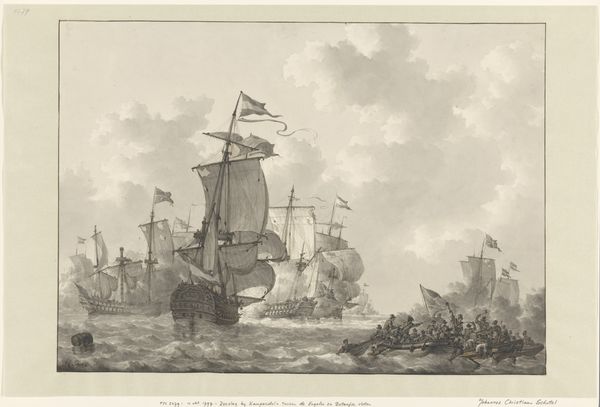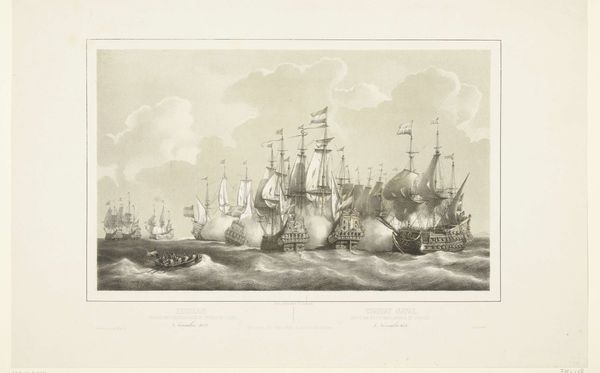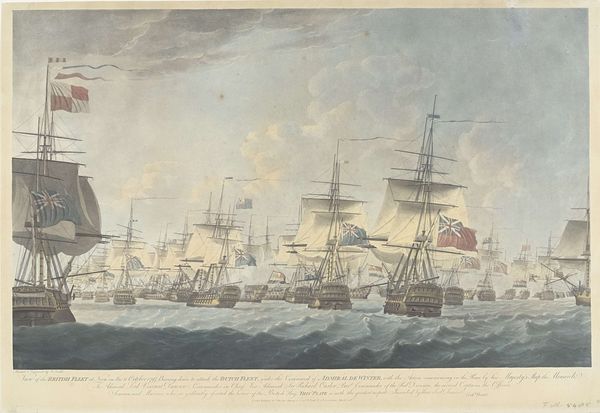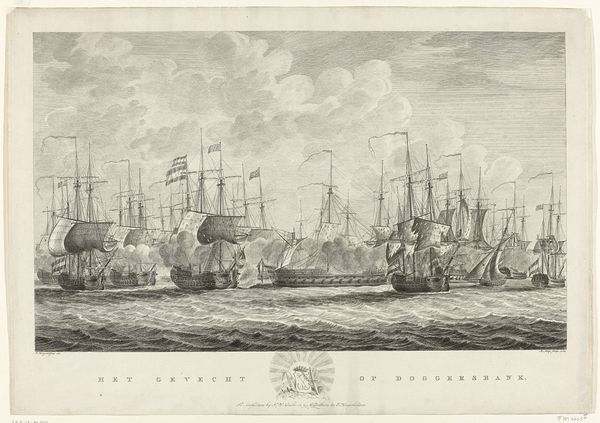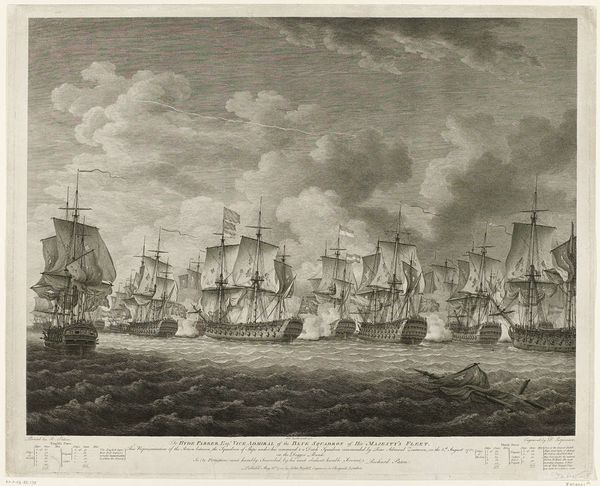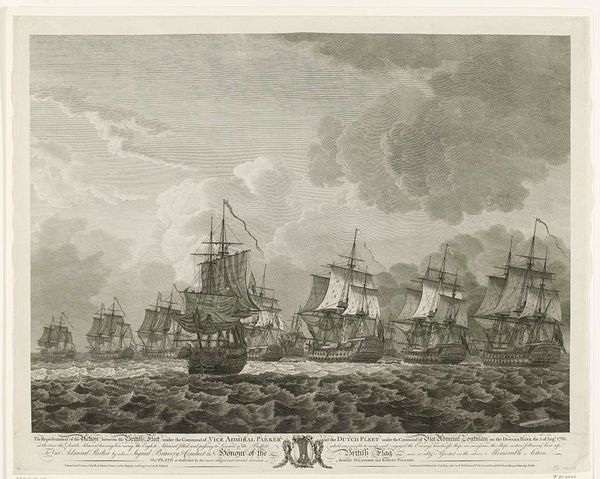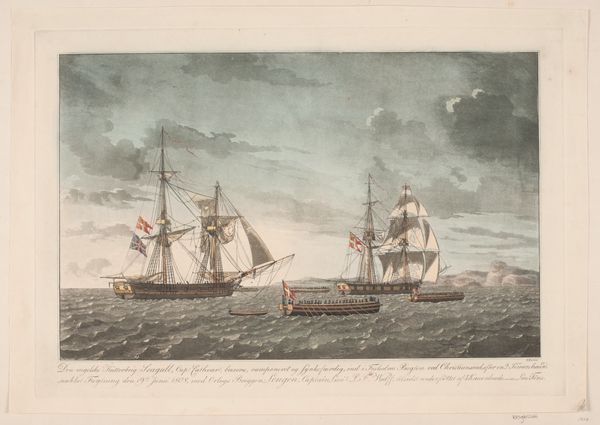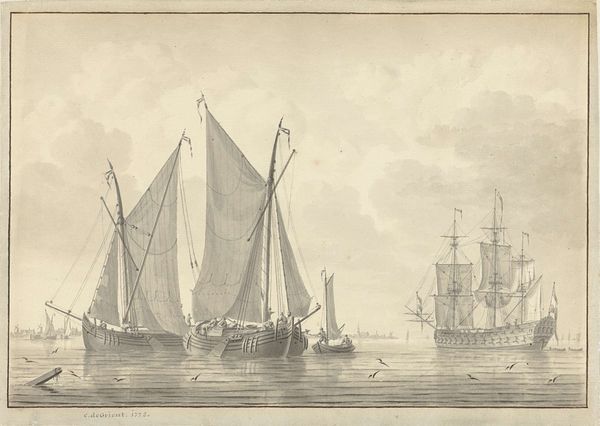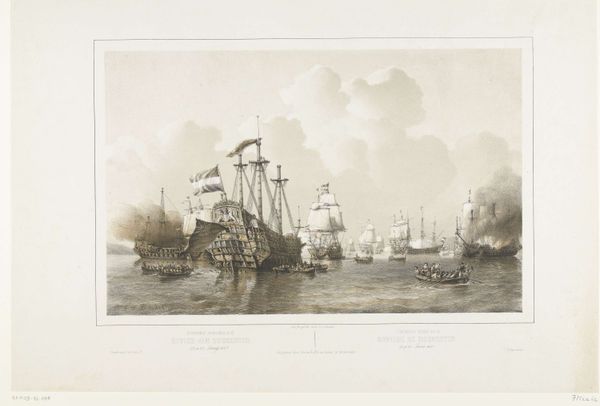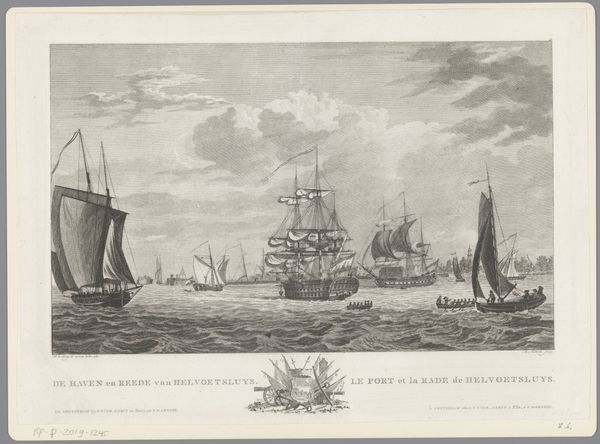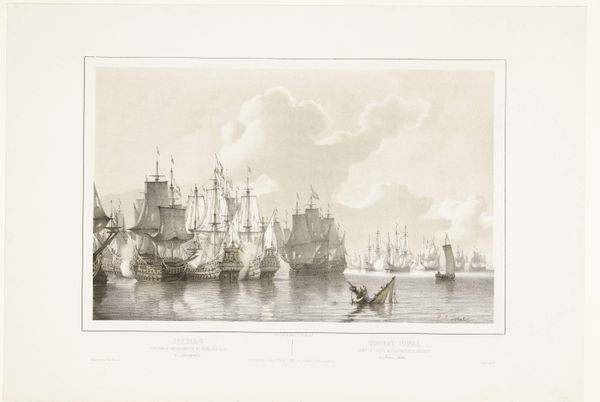
Dimensions: height 334 mm, width 483 mm
Copyright: Rijks Museum: Open Domain
Curator: This watercolor painting before us, entitled "De slag op de Zuiderzee tegen Bossu, 1573," was rendered between 1848 and 1855 by Petrus Johannes Schotel. It depicts the Battle on the Zuiderzee. What are your initial thoughts? Editor: The composition, with its central cluster of imposing ships against a somewhat hazy sky, feels immediately romantic and grandiose, doesn’t it? There's a certain drama in how the light catches the sails. Curator: Absolutely. It's essential to consider this through the lens of 19th-century romanticism—a style that often celebrated moments of national triumph through emotive imagery. Schotel clearly intends to evoke feelings of Dutch naval prowess. Editor: Yes, and if you analyze the formal components, like the interplay between the rigid lines of the ships and the softer washes of color, we begin to see how Schotel uses technique to further reinforce this tension between order and drama. The material itself, watercolor, lends itself well to the hazy backgrounds, offering a sense of atmosphere. Curator: I’d agree, and go a little further: Watercolors in a piece such as this one from the mid-1800s have fascinating ties to their pigments—pigments produced with international commerce. Schotel wasn’t just choosing colors, but buying into a marketplace affected by labor overseas, colonization and material economics. The battle itself represents a moment in the Eighty Years' War, with tangible stakes and repercussions tied to social changes that Schotel would be inheriting centuries later. Editor: Indeed. Even now, noting the composition reveals much. We’ve established this historical context adds considerable depth, but the painting’s impact rests fundamentally on Schotel’s manipulation of form. Curator: Both observations provide a lens to better view Schotel’s artistic choices. His piece serves both as art object and as document reflecting socioeconomic forces, giving voice to a very tangible cultural heritage. Editor: It also underscores how different analytic frameworks can unlock distinctive layers within one artwork. A productive encounter!
Comments
No comments
Be the first to comment and join the conversation on the ultimate creative platform.
